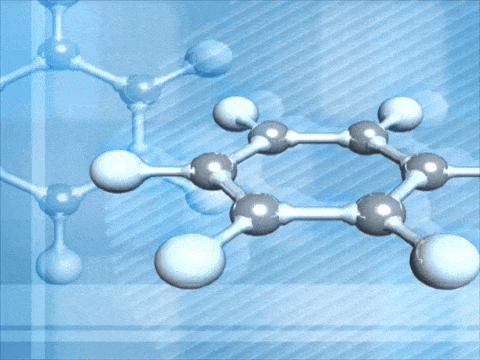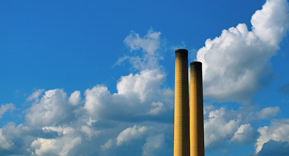Resources
AFFILIATIONS



Certificates
EPA TESTING LINKS
- Method 1 - Traverse Points
- Method 1A - Small Ducts
- Method 2 - Velocity - S-type Pitot
- Method 2A - Volume Meters
- Method 2B - Exhaust Volume Flow Rate
- Method 2C - Standard Pitot
- Method 2D - Rate Meters
- Method 2E - Landfill Gas Production Flow Rate
- Methods 2F, 2G, and 2H
- Method 3 - Molecular Weight
- Method 3A - CO2, O2 - Instrumental
- Method 3B - CO2, O2 - Orsat
- Method 3C - CO2, CH4, N2, O2 - TCD
- Method 4 - Moisture Content
- Method 5 - Particulate Matter (PM)
- Method 5A - PM Asphalt Roofing (Particulate Matter)
- Method 5B - PM Nonsulfuric Acid (Particulate Matter)
- Method 5D - PM Baghouses (Particulate Matter)
- Method 5E - PM Fiberglass Plants (Particulate Matter)
- Method 5F-PM Fluid Catalytic Cracking Unit
- Method 5G - PM Wood Heaters from a Dilution Tunnel
- Method 5H - PM Wood Heaters from a Stack
- Method 5I - Determination of Low Level Particulate Matter Emissions
- Method 6 - Sulfur Dioxide (SO2)
- Method 6A - SO2, CO2
- Method 6B - SO2, CO2 - Long Term Integrated
- Method 6C - SO2 - Instrumental
- Method 7 - Nitrogen Oxide (NOx)
- Method 7A - NOx - Ion Chromatographic Method
- Method 7B - NOx - Ultraviolet Spectrophotometry
- Method 7C - NOx - Colorimetric Method
- Method 7D - NOx - Ion Chromatographic
- Method 7E - NOx - Instrumental
- Method 8 - Sulfuric Acid Mist
- Method 9 - Visual Opacity
- Method 10 - Carbon Monoxide-NDIR
- Method 10A - CO for Certifying CEMS
- Method 10B - CO from Stationary Sources
- Method 11 - H2S Content of Fuel
- Method 12 - Inorganic Lead
- Method 13A - Total Fluoride (SPADNS Zirconium Lake)
- Method 13B - Total Fluoride (Specific Ion Electrode)
- Method 14 - Fluoride for Primary Aluminum Plants
- Method 15 - Hydrogen Sulfide, Carbonyl Sulfide, and Carbon Disulfide
- Method 15A - Total Reduced Sulfur Emissions From Sulfur Recovery Plants in Petroleum Refineries
- Method 16 - Sulfur (Semicontinuous Determination)
- Method 16A - Total Reduced Sulfur (Impinger)
- Method 16B - Total Reduced Sulfur (GC Analysis)
- Method 17 - In-Stack Particulate (PM)
- Method 18 - VOC by GC
- Method 19 - SO2 Removal & PM, SO2, NOx Rates from Electric Utility Steam Generators
- Method 20 - NOx from Stationary Gas Turbines
- Method 21 - VOC Leaks
- Method 22 - Fugitive Opacity
- Method 23 - Dioxin and Furan
- Method 24 - Surface Coatings
- Method 24A - Publication Rotogravure Inks and Related Publication Rotogravure Coatings
- Method 25 - Gaseous Nonmethane Organic Emissions
- Method 25A - Gaseous Organic Concentration (Flame Ionization)
- Method 25B - Gaseous Organic Concentration (Infrared Analyzer)
- Method 25C - NMOC in Landfill Gases
- Method 25D - VOC of Waste Samples
- Method 25E- Vapor Phase Organic Concentration in Waste Samples
- Method 26 - Hydrogen Chloride, Halides, Halogens
- Method 26A - Hydrogen Halide & Halogen-Isokinetic
- Method 27 - Vapor Tightness of Gasoline Tank-Pressure Vacuum
- Method 28 - Certification and Auditing - Wood Heaters
- Method 28A - Air to Fuel Ratio, Burn Rate - Wood-fired Appliances
- Method 29 - Metals Emissions from Stationary Sources
- Method 30b - Mercury Sorbent Trap Procedure
- Method 101 - Mercury from Chlor-Alkali Plants (Air)
- Method 101A - Mercury from Sewage Sludge Incinerators
- Method 102 - Mercury from Chlor-Alkali Plants (Hydrogen Streams)
- Method 103 - Beryllium Screening Method
- Method 104 - Beryllium Emissions Determination
- Method 105 -Mercury in Wastewater Treatment Plant Sewage Sludge
- Method 106-Determination of Vinyl Chloride
- Method 107 - Vinyl Chloride Content of Inprocess Wastewater Samples
- Method 107A - Vinyl Choride Content of Solvents
- Method 108 - Particulate & Gaseous Arsenic Emissions
- Method 108A - Determination of Arsenic Content in Ore Samples from Nonferrous Smelters
- Method 108B - Arsenic
- Method 108C - Arsenic
- Method 111 - Polonium-210 Emissions
- Method 114 - Radionuclide Emissions
- Method 115 - Radon-222 Emissions
- Method 201 - PM10 (In-stack, CRS)
- Method 201A - PM10 (In-stack, CRS) (revised with figures)
- Method 202 - Condensible Particulate Matter
- Method 204 - Permanent or Temporary Total Enclosure (TTE) for Determining Capture Efficiency
- Method 204A - VOCs in Liquid Input Stream
- Method 204B - VOCs in Captured Stream
- Method 204C - VOCs in Captured Stream (Dilution Technique)
- Method 204D - Fugitive VOCs from Temporary Total Enclosure
- Method 204E - Fugitive VOCs from Building Enclosure
- Method 204F - VOCs in Liquid Input Stream (Distillation)
- Method 205 - Gas Dilution Calibration
- Method 301 - Validation Protocol
- Method 303 - By-product Coke Oven Batteries
- Method 303A - Nonrecovery Coke Oven Batteries
- Method 304A - Biodegradation Rates-Vent Option
- Method 304B - Biodegradation Rates- Scrubber Option
- Method 305 - Potential VOC in Waste
- Method 306 - Chromium Emissions Electroplating/Anodizing
- Method 306A - Chromium Emissions Electroplating/Anodizing (Mason Jar Method)
- Method 306B - Surface Tension for Tanks Electroplating/Anodizing
- Method 307 - Emissions from Solvent Vapor Cleaners
- Method 308 - Methanol Emissions
- Method 310A - Residual Hexane
- Method 310B - Residual Solvent
- Method 310C - Residual N-Hexane in EDPM Rubber
- Method 311 - HAPS in Paints & Coatings
- Method 312A - Styrene in SBR Latex (GC).
- Method 312B - Styrene in SBR Latex by Capillary GC
- Method 312C - Styrene in SBR Latex Produced by Emulsion Polymerization
- Method 313A - Residual Hydrocarbon in Rubber Crumb
- Method 313B - Residual HC in Rubber Crumb by Capillary GC
- Method 315 - PM and MCEM from Aluminum Production Facilities
- Method 316 - Sample & Analysis for Formaldehyde Emissions in the Mineral Wool & Wool Fiberglass Industries
- Method 318 - Extractive FTIR Method for Measurement of Emissions from the Mineral Wool and Wool Fiberglass Industries
- Method 320 - Vapor Phase Organic & Inorganic Emissions by Extractive FTIR
- Method 321 - Gaseous HCl Emissions at Portland Cement Kilns by FTIR



